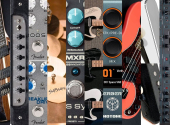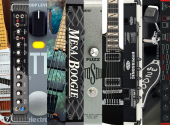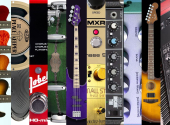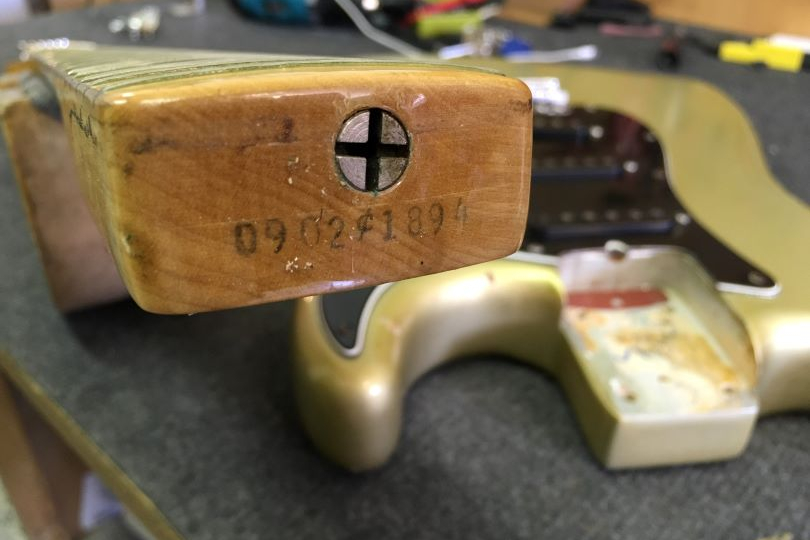
Under the Hood #7: Fender Guitars Dating and Serial Numbers
Literally under the hood of electric guitars—hidden when looking from the outside and only visible when the instrument is disassembled—are serial numbers and various parts dates. Nowadays, this is particularly useful for authenticating older instruments. Various forms of markings refer to the different eras of guitar development, and thanks to them we can at least partially delve into the history. However, precise dating of guitars is no easy thing. It can be easily forged, individual guitar parts can originate from different years, and there is a specific method of reading for many codes.
Manufacturing with serial numbers and dates is also commonly used in industries other than guitar making. It’s a logical procedure because one needs to keep track of everything. Fender has dated its guitars since the beginning of its production. However, the method of dating has changed several times over the years. Fortunately, nowadays, there are comprehensive databases of serial numbers and guides on how to date guitars correctly. Markings have been done over the years either by handwriting, stamping, or imprinting on metal parts of the hardware. Often it is a combination of all options.
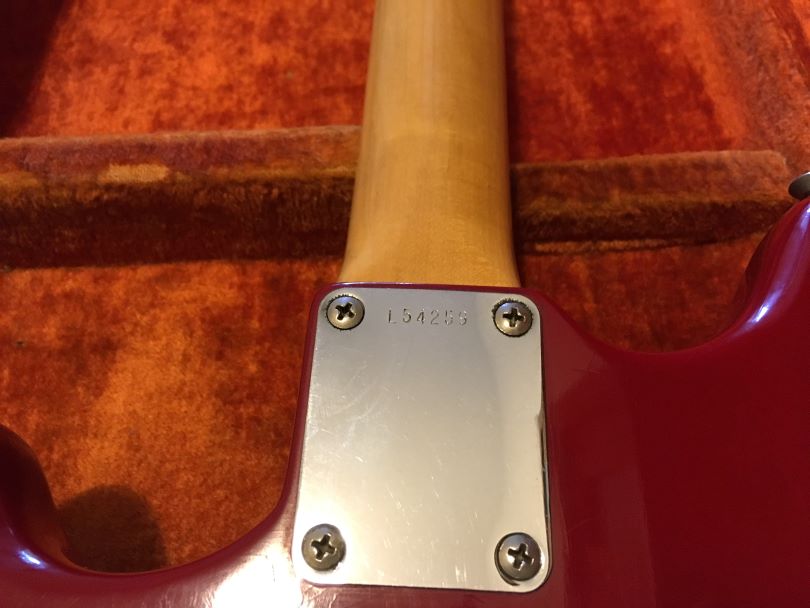
What exactly does the serial number and dating indicate?
Because manufacturing is a lengthy process and different manufacturers often produce individual parts in large quantities, it is common for the dating on various parts of a single guitar to vary by several years. Therefore, it is sometimes misleading when a particular year is presented as the date of origin with old guitars. The correct information should instead provide a specific time range.
The most relevant reference is a serial number, which indicates a general period rather than a specific year. While there are databases of serial numbers, many of them show just a particular period. If you enter a serial number of a guitar from the 1970s, for example, into a decoder, the result is usually a range of two to three years. Sometime during those years, the guitar was actually manufactured and then released into the world.
Dating Fender guitars is a rewarding task. This is because they are made up of dozens of parts—and most importantly, they don’t have necks glued to the body. So if you take this guitar apart thoroughly, you’ll find more relevant data than just a general range of production years by a serial number.
But there are pitfalls here, too. Fender had many parts in the factory in large quantities because it’s good to have multiple pieces of products and parts in stock if needed. But this fact often poses a problem for future researchers who will be puzzling over exact dating. It is common to find that a part was made in a particular year (which was also written on it) but there was a four-year difference with the rest of the guitar. Thus, in 1966 Fender bought a large batch of potentiometers that were dated the same year of manufacture but were then used for guitars over the next few years. The same thing happened with other parts, too.
The dating of Fenders from the 1950s and the first half of the 1960s is significant for one simple reason. With each earlier year of production, the price of these guitars goes up. If you have a 1956 Fender Telecaster at home, its price is high. But if you owned the same model just a year or a few years older, it would have been even higher.
Therefore, because of the difference in the age of the parts, the price is difficult to be determined. It’s common that a dealer somewhere in the world offers a guitar from a particular year and refers to its serial number. In such cases, do not be fooled and check the date of the individual guitar parts and determine the actual age and value of the instrument accordingly.
The dating will often testify whether the individual guitar parts are original or altered. At first glance, pickups or potentiometers may look the same but by checking their age, you may find that their date of manufacture is, for example, ten years later than the rest of the guitar. However, these facts may only be discovered after a thorough inspection.
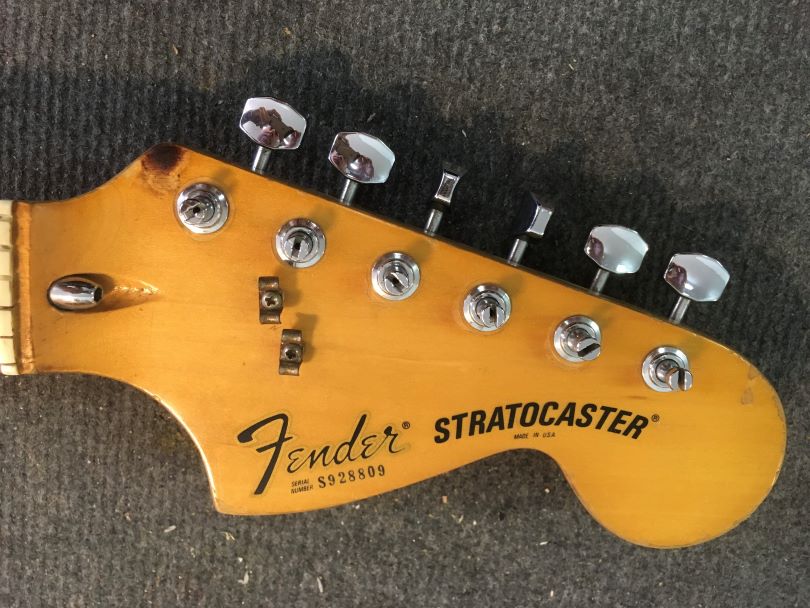
Serial numbers
The first Fenders had their serial numbers stamped on the bridge; later, the number was imprinted on the plate between the screws in the neck/body joint. Years later, serial numbers appear on the headstock near the Fender logo. On Japanese Fenders from the ’80s and ’90s, the serial number is on the back of the neck, just a little apart from the guitar body. Nowadays, you may find it on the back of the headstock. From the beginning of Fender production until 1977, serial numbers are always stamped either on the bridge or a plate on the back of the body.
Usually, the numbers are in chronological order, but it’s not a rule. The years overlap a lot, therefore serial numbers, in fact, only serve as an essential guide. They were not assigned to guitars in strict order but randomly. It was all manual work, and the serial number plates were put on the instruments as they came to hands.
Until 1954 the serial number was four digits, raising to five in 1955 and expanding further until 1963. There was an interim period until 1965 when the number was preceded by the letter L. Having been bought by CBS, from 1965 onwards, a capital F letter appears on Fender guitars below the serial number on the plate on the back of the body, thus marking the so-called “CBS era.” After that, until 1976, serial numbers were six digits and always stamped into the metal plate.
Since 1977 the placing of the serial number has changed. Now it is on the front of the headstock under the Fender logo. The serial number is always preceded by one letter to indicate the decade for ease of reference. In the 70s, it was the letter S, in the 80s the letter E, and the letter N indicates the nineties. Since 2000 the serial number has been preceded by the letter Z or a letter indicating the country of manufacture (US – USA, MX – Mexico, etc.).
Many anniversary or signed models have their specific serial numbers. Similarly, the Fender Custom Shop uses its own unique markings. However, the database is not freely accessible and Fender charges a fee to verify the authenticity of the serial number and the entire guitar.

Neck dating
To achieve more accurate dating with Fender guitars, they need to be disassembled. The first piece of the whole patchwork mapping the history of the instrument is neck dating. The date can usually be found after unscrewing the neck at the end. In the 1950s, it was written in ordinary pencil, in the 1960s, it was replaced by a stamp. In the 1970s, stamps of different colors were used, for example, red and green.
When looking at dating, many people decode it wrongly. Therefore, it is good to know how to read the codes. The first dating written in pencil was as follows: until 1954 the format used was month-day-year, for example, 2-14-53. Then, until 1962, it changed to month-year, such as 8-57. In 1959 no dates were written on necks for several months.
From 1962, a stamp with more information used to be printed on the end of the neck. For example, in the date 8 OCT 64 A, the first number is the abbreviation of the guitar model, here standing for the Duo-Sonic 2. The following three letters are the abbreviation of October, and the next digits are the last two digits of 1964. The letter A indicates the width of the zero fret.
From the late 1960s onwards, Fender used an eight-digit code, from which one can read, among others, the fretboard material. For example, in the serial number 01 03 13 6 2, the numbers 01 indicate the model, which in this case is the Precision Bass, 03 stands for a maple neck, 13 is the week of the year, 6 shows the year 1976, and 2 means the day of the week, Tuesday.
Since the 1980s, various vintage and reissue models have appeared in Fender production, with markings that differ from or replicate the old era.
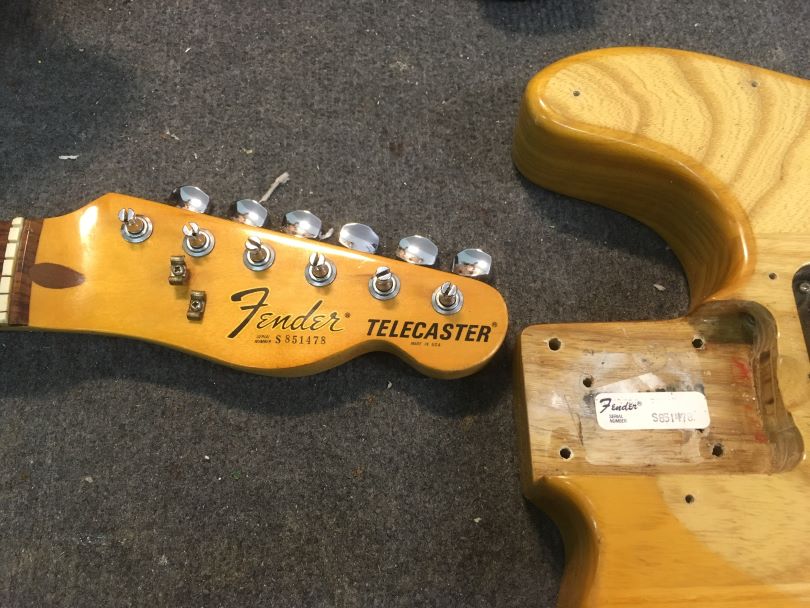
Body dating
The first Fender models before 1954 were usually furnished with the body dating in the neck pocket. Later, the dating appears in the pickup cavity, sometimes on the back of the body in the tremolo spring cavity. In the ’70s and ’80s, a sticker with a serial number identical to the one on the headstock is placed in the neck pocket. Since the ’80s, the date has usually been provided in a stamp in the neck pocket.
Unfortunately, the stamps fade through frequent unscrewing of the neck from the body and time effects, making them difficult to read.
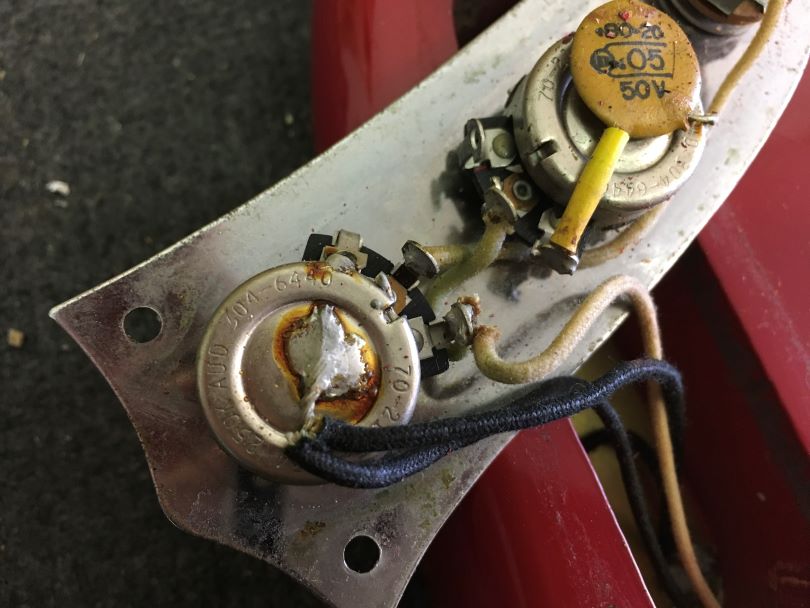
Potentiometer dating
The dating of electronics, specifically potentiometers, is interesting. There are usually more electronic parts in a guitar, giving us more insight into the dating of the guitar. Their code markings are on the bottom or side of the pot. Unfortunately, it often happens that there is tin with cables soldered over the date. If you still want to find out the date of manufacture, you need to unsolder the wires and remove the tin. The date is stamped, so it is usually readable.
Fender usually used two brands of pots—mostly Stackpole in the ’50s and CTS in the ’60s. The two brands have different coding, so you can quickly tell which one it is. The Stackpole code is 304, the CTS code is 137. The marking format is always the same: for example, 304-64-40. This means the potentiometer is Stackpole, 64 indicates 1964, 40 stands for a particular week of the year. The CTS potentiometer would be marked the same way, only the first three numbers would be 137.
Potentiometers don’t last forever, though. The old ones may be high quality, but it’s a component used constantly while playing. That’s why they’re replaced over the years. Back in the ’90s, they were dated clearly, so one can always tell at a glance whether the potentiometer in a guitar is original or replaced. Of course, there are also cases where a potentiometer from 1970 could have stopped working in the same year and was replaced by another one, for example from 1971. It is then necessary to thoroughly assess the condition of the soldered contacts and determine whether the potentiometer is original or replaced (albeit still period).
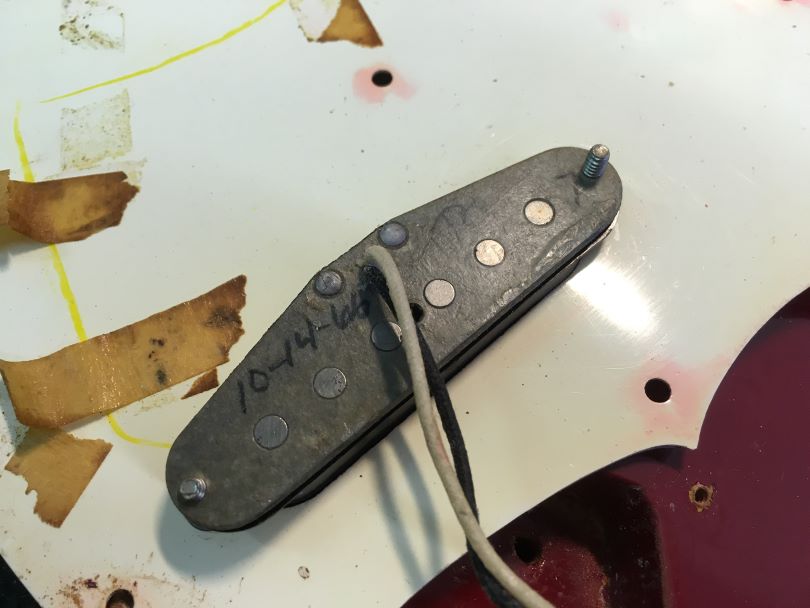
Pickup dating
The pickups are a reliable part when identifying a guitar. Over the years, all of them or at least one of the entire set have usually been dated.
With instruments from the 1960s, I often encounter pickups on which the date is handwritten. Unfortunately, many a time it is not legible and the originality of the pickup must be verified, for example, by its specifications or material and design. In the 1970s, common dating is in the form of a stamp. The year is usually indicated by the last one or two digits of the year.

For a more accurate dating of a guitar, always refer to all surviving data
The individual parts of a guitar were usually made separately and in different quantities. The factory often had a more extensive stock of necks, bodies, pickups, bridges, potentiometers, and other parts available. Guitars were then pieced together as they came out, not strictly by the date of each part production.
So it’s pretty standard for a guitar with a serial number from 1976, for example, to have a neck from 1975, a body from 1974, potentiometers from 1977, and pickups from 1976. In other words: the guitar was made between 1974 and 1977. The more data is preserved on the guitar, the more accurately one can determine the overall dating.
If you have the opportunity to examine a large number of guitars, you can date them to specific periods by other features than the date itself. There have been many publications and articles written about Fender where you can read a lot of valuable details, such as which famous employees worked in the factory and what parts of guitars they used to make. Thus, the stamp with the name of the worker who made the neck or body can also be important for dating. If the date on the neck is illegible, but the name is provided, you can at least determine the production period by the years in which this person was employed at Fender, for example, making necks.
One of the famous 1950s workers is Tadeo Gomez, whose necks are highly prized today. Then in the seventies and eighties, the name Torres appears a lot on necks.
Some periods are also dated by the materials used—a type of wood, type of lacquer, its color, and similar specifications.

Beware of fakes
Unfortunately, as is often the case in other areas, with guitars, too, counterfeits and fakes are floating around the world in large numbers to deceive buyers and sell them replicas. In today’s world, with many used guitars being sold across countries via the web just based on advertisements and photos, it’s easy to get duped. It also makes it difficult to pursue any claims, as sellers sometimes stop communicating after the sale.
Many smooth operators buy up different parts of guitars, put them together, and resell them as originals from one era or another. In many cases, fraud is difficult to detect. That’s why I recommend contacting a professional, such as a guitar technician, who has experience working with guitars across time and can spot fakes and various jigsaw pieces. This is worthwhile not only for old valuable guitars but also for standard second-hand instruments.
Forgeries also appear on reputable sites because it’s difficult to check every single advertisement. I also came across replicas of old Fenders from the 1950s offered for thousands of euros as originals. Fortunately, there are many collectors and enthusiasts worldwide who monitor the market for old instruments and point out possible scams.
If you have found an error or typo in the article, please let us know by e-mail info@insounder.org.


